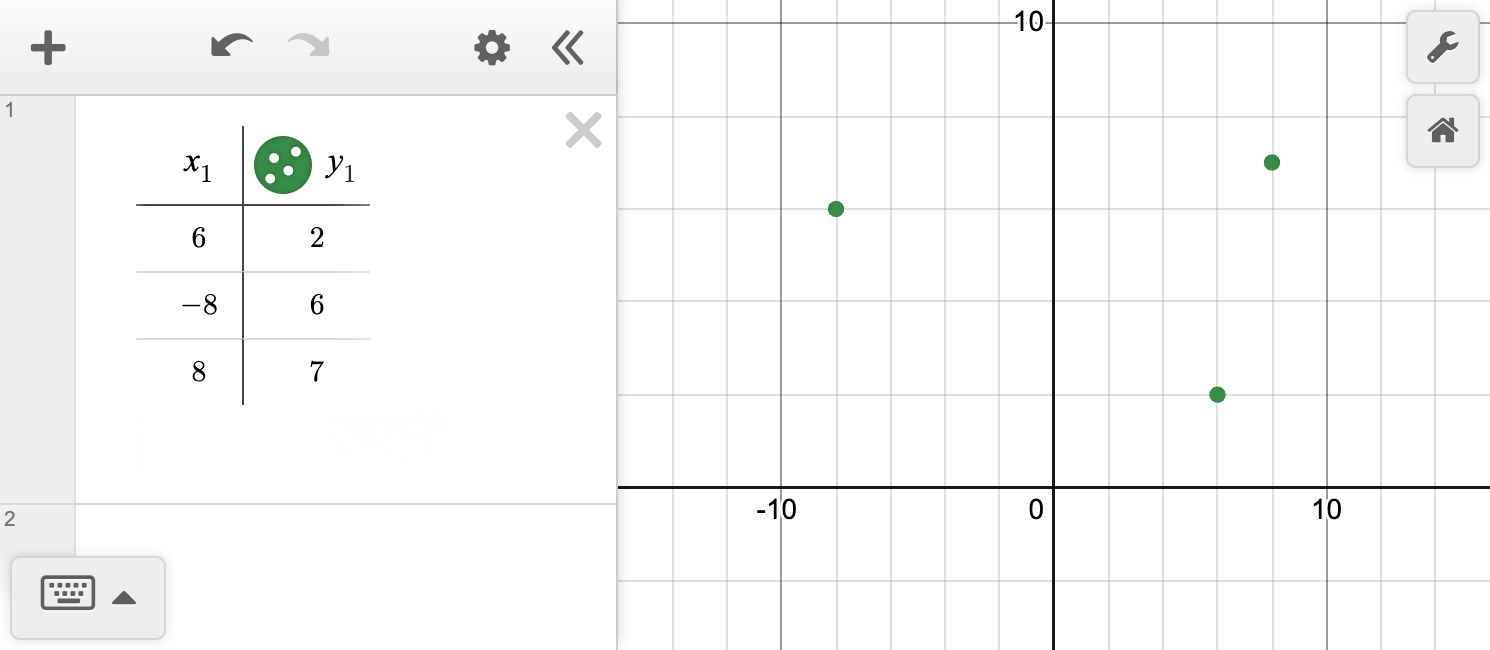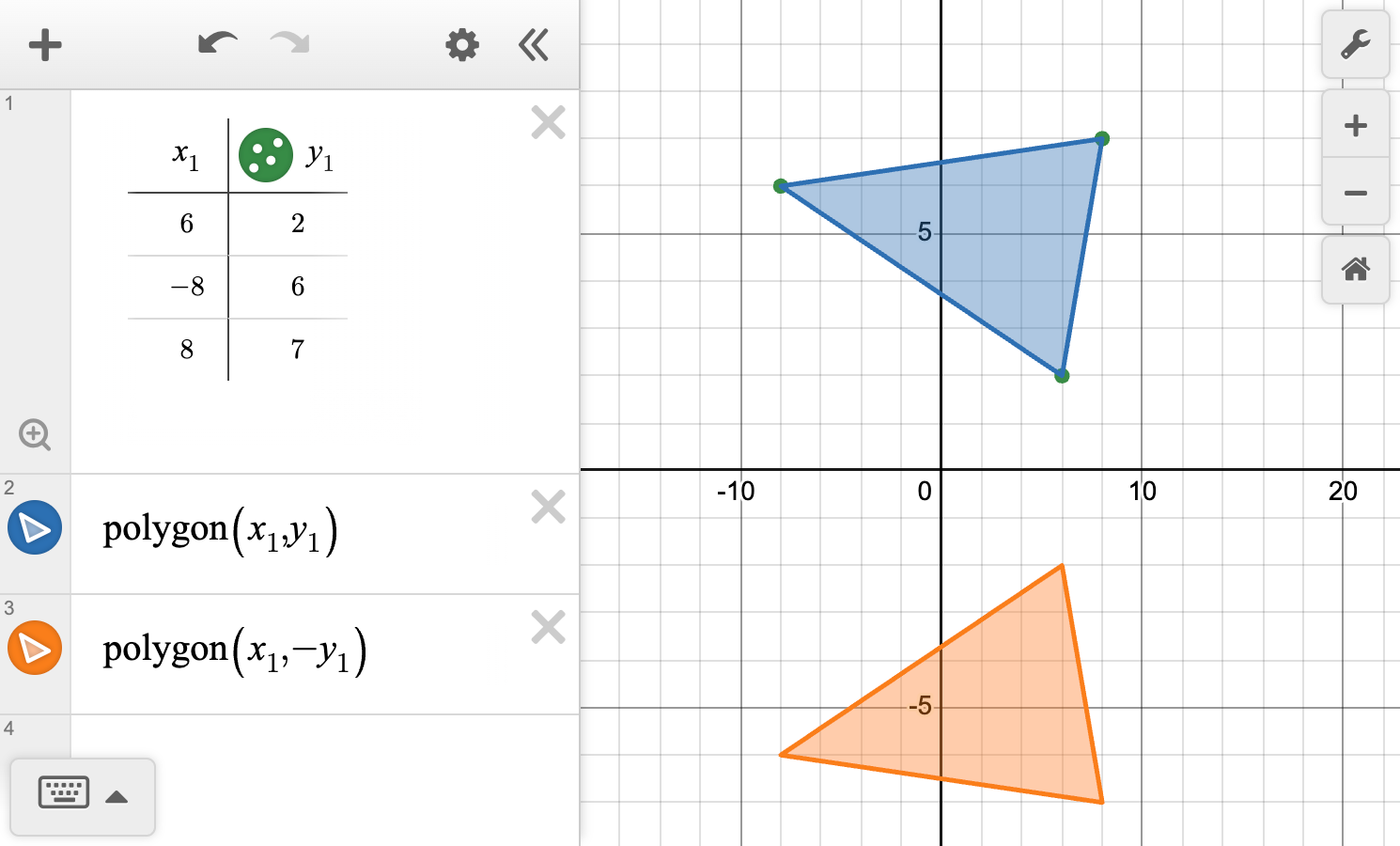5.02 Reflections
Ideas
Reflections
Exploration
Drag the points to create a triangle. Check the boxes to show the line of reflection, image, and movement of points. Drag the sliders to change the line of reflection.
- What happens to the image as you move the line of reflection?
- What do you notice about the angle formed by the segments from the preimage to the image and the line of reflection?
- What can we say about the distance of each figure to the line of reflection?
We can think of a reflection as a function which sends the input point to an output point so that both points are equidistant from the line of reflection. This means that the midpoint of the segment that connects these two points lies on the line of reflection.
In other words, the line of reflection is always the perpendicular bisector of the line segment joining corresponding points in the preimage and image. Because of this, the line of reflection will always be equidistant from the two corresponding points in the preimage and image, so we get a mirror image over the line of reflection.
The most common lines of reflection have the following impact on a point:
Line of reflection: x-axis \qquad Coordinate mapping: \left(x, y\right) \to \left(x, -y \right)
Line of reflection: y-axis \qquad Coordinate mapping: \left(x, y\right) \to \left(-x, y \right)
Line of reflection: y=x \, \, \qquad Coordinate mapping: \left(x, y\right) \to \left(y, x \right)
Line of reflection: y=-x \, \, \, \quad Coordinate mapping: \left(x, y\right) \to \left(-y, -x \right)
Examples
Example 1
For the given graph:
Identify the line of reflection.
Write the transformation mapping in coordinate notation.
Example 2
Determine the image of the quadrilateral PQRS when reflected across the line y=-x.
Example 3
A new housing development is being built so that each property is a mirror image of the one next door. Here are the plans for 2 neighboring properties. Using geometric construction, draw the property line between the two houses.
The most common lines of reflections have the following impact on a point:
Line of reflection: x-axis \qquad Transformation mapping: \left(x, y\right) \to \left(x, -y \right)
Line of reflection: y-axis \qquad Transformation mapping: \left(x, y\right) \to \left(-x, y \right)
Line of reflection: y=x \, \, \qquad Transformation mapping: \left(x, y\right) \to \left(y, x \right)
Line of reflection: y=-x \, \, \, \quad Transformation mapping: \left(x, y\right) \to \left(-y, -x \right)



